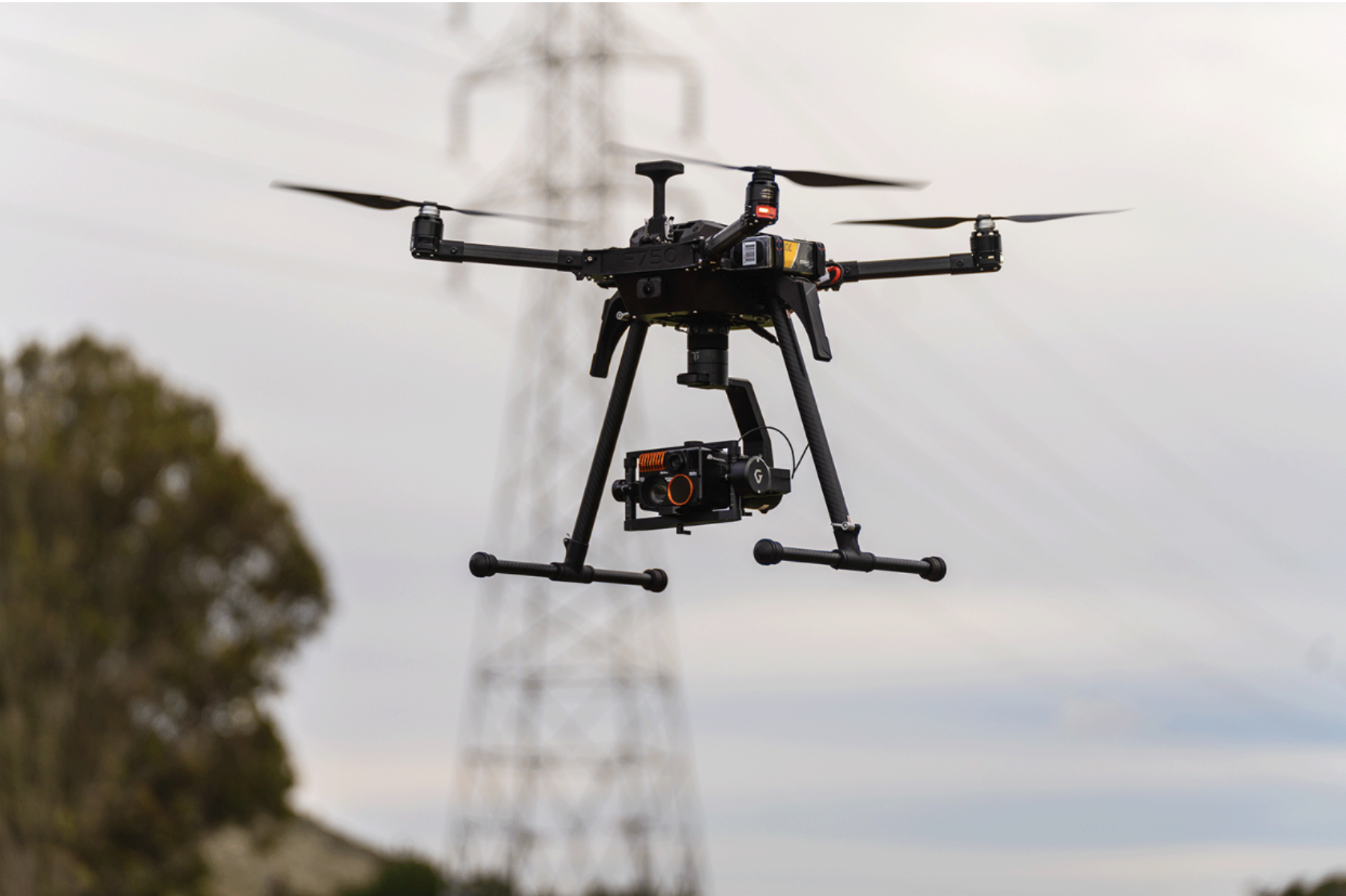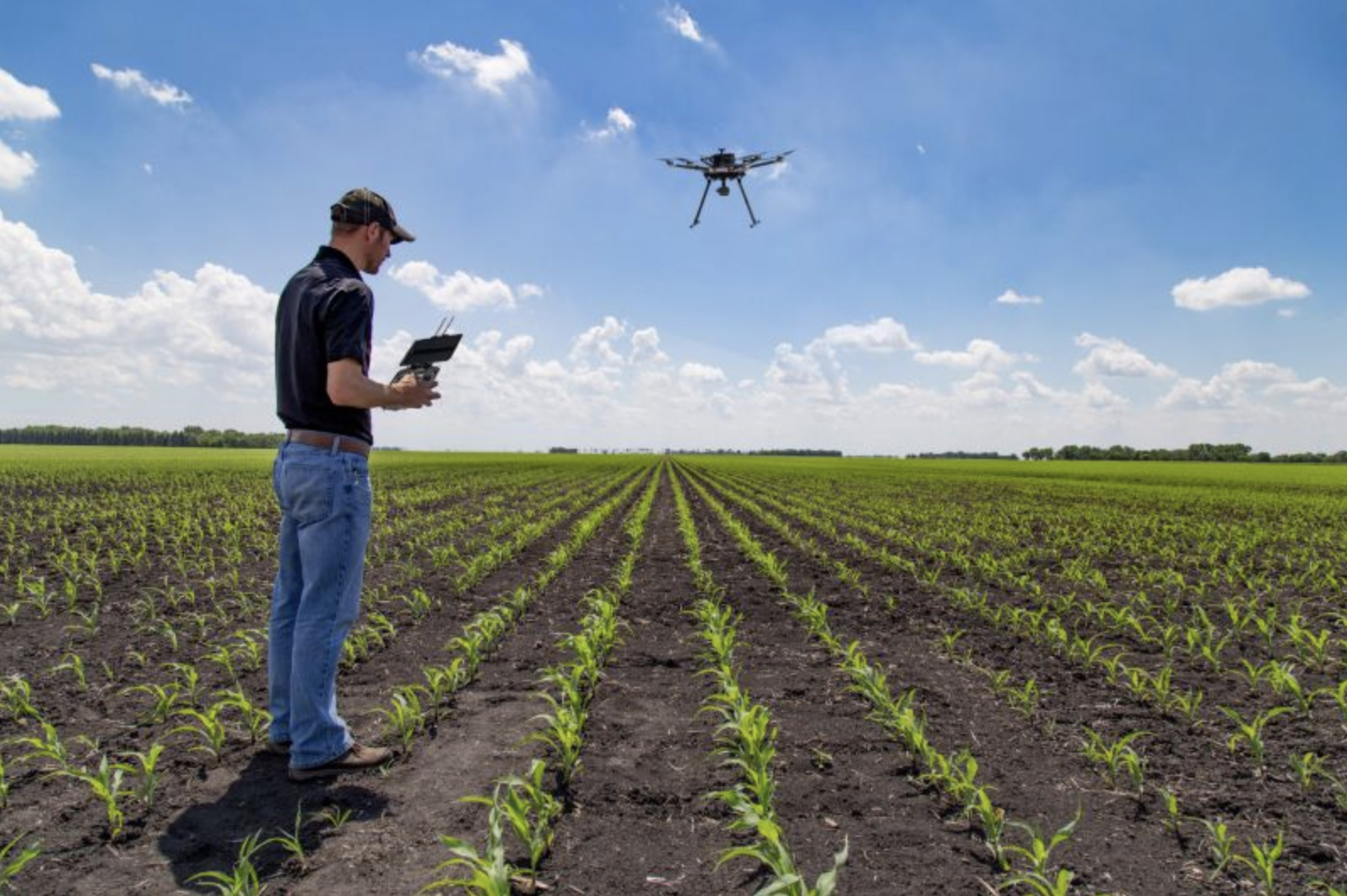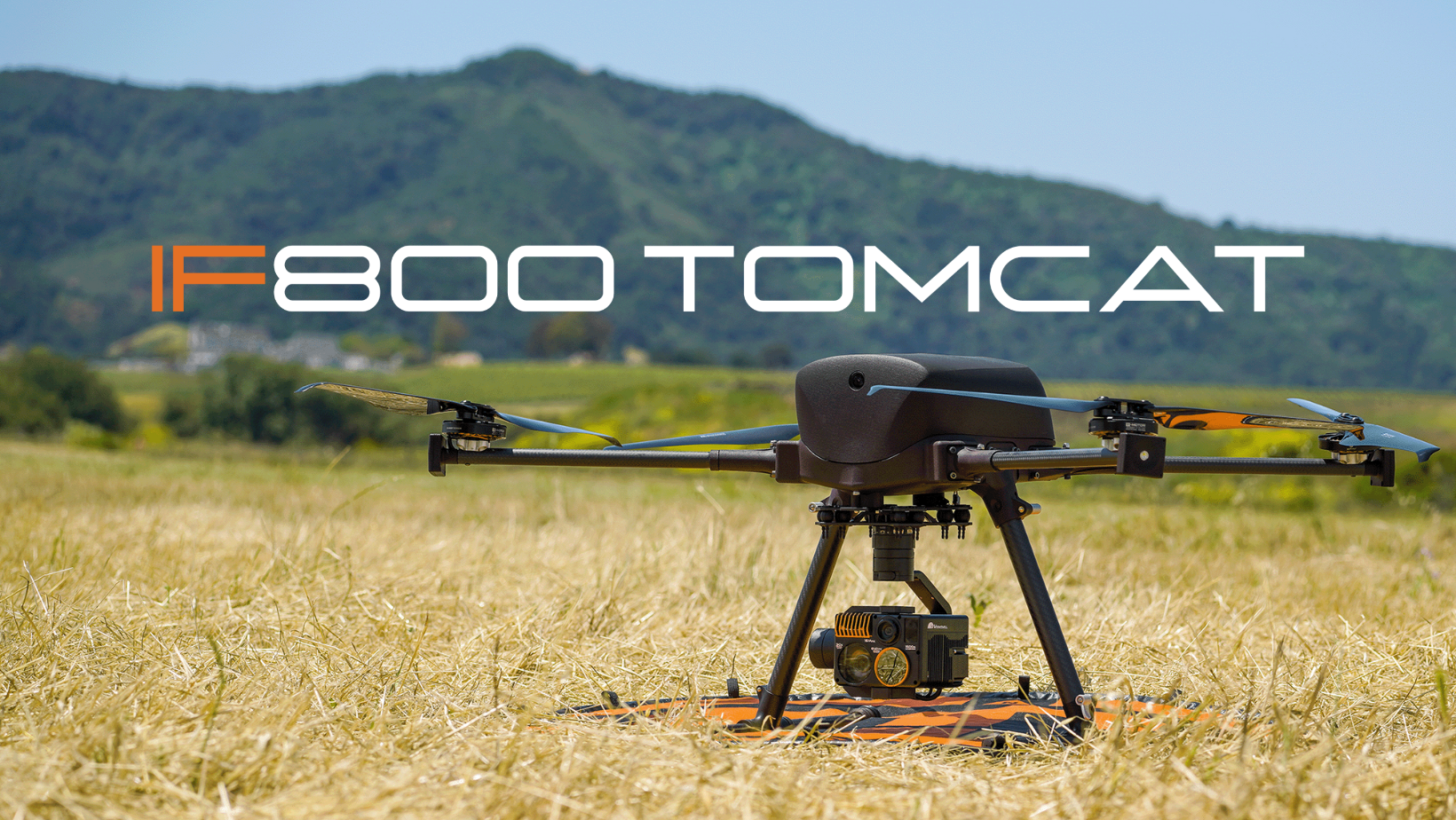
September 20th, 2023
In recent years, industrial drones have emerged as powerful tools that are revolutionizing various industries.
With their advanced aerial technology, these unmanned aerial vehicles (UAVs) are transforming the way businesses operate, increasing efficiency, reducing costs, and enhancing safety.
From infrastructure maintenance to precision agriculture, these industrial drones are reshaping the future of industries across the globe.

Industrial drones, also known as commercial drones or UASs, are remotely operated aircraft that are designed to perform specific tasks for industrial applications.
Unlike recreational drones, which are primarily used for personal enjoyment, industrial drones are equipped with advanced features and technologies that enable them to carry out complex tasks with precision.
These drones are typically equipped with high-resolution cameras, sensors, and other specialized equipment that allow them to capture data, perform inspections, and execute various tasks more efficiently than conventional methods.
Questions? Need a product demo? Need additional information? Contact us and a member of our team will get back to you promptly.
The applications of industrial drones are vast and diverse. They are being employed in a wide range of industries, including construction, agriculture, oil and gas, logistics, and search and rescue operations.
In the construction industry, industrial drones are used for mapping and surveying construction sites, monitoring progress, and inspecting structures for maintenance and safety purposes.
In agriculture, drones equipped with LiDAR imaging technology and thermal sensors are utilized to monitor crop health, detect irrigation issues, and optimize resource management.
The oil and gas industry utilizes industrial drones for pipeline inspections, monitoring oil rigs, and conducting environmental surveys.
Furthermore, drones have proved invaluable in logistics operations, helping automate inventory management, improving warehouse efficiency, and enabling faster and more accurate deliveries.
Industrial drones come equipped with advanced features and technologies that make them more efficient and versatile. Some of these features include:
1. GPS and navigation systems for precise flight paths and autonomous operation.
2. High-resolution cameras and thermal sensors for capturing detailed images and detecting temperature variations.
3. Lidar sensors for 3D mapping and terrain modeling.
4. Data analytics and artificial intelligence algorithms for real-time data processing and analysis.
These advanced features and technologies enable industrial drones to perform tasks more accurately, efficiently, and safely, saving time and resources for businesses.

With the increasing popularity and utilization of industrial drones, regulations and guidelines have been put in place to ensure safe and responsible usage.
Depending on the country and industry, there are specific rules and requirements that govern the operation of industrial drones.
These regulations typically address aspects such as: drone registration, pilot certification, flight restrictions, and privacy concerns. It is essential for businesses to familiarize themselves with these regulations and ensure compliance when integrating industrial drones into their operations.
The integration of industrial drones into various industries brings numerous benefits:
1. Increased efficiency: Drones can complete tasks quickly and accurately, reducing the time and resources required for manual operations.
2. Cost savings: Drones eliminate the need for costly equipment and labor-intensive processes, resulting in significant cost savings for businesses.
3. Enhanced safety: By replacing humans in dangerous tasks, drones help improve safety conditions by reducing the risk of accidents and injuries.
4. Data collection and analysis: Drones capture data from various sensors and cameras, providing valuable insights for informed decision-making and process optimization.
With these benefits, industries are finding innovative ways to integrate drones into their workflows, leading to increased productivity and competitive advantage.
Inspections play a crucial role in ensuring the safety and reliability of structures, facilities, and equipment.
Industrial drones have revolutionized the inspection process by providing a safer and more efficient alternative.
By deploying drones equipped with high-resolution cameras and specialized sensors, inspections can be carried out with greater precision and accuracy.
Drones can access hard-to-reach areas, conduct detailed visual inspections, and capture high-quality images and videos for further analysis.
This aerial surveillance capability allows for earlier detection of potential issues, reduces downtime for inspections, and contributes to overall cost savings for businesses.
Maintaining infrastructure, such as bridges, power lines, and railways, is a critical task that often requires manual inspections and regular maintenance. Industrial drones have proven to be valuable assets in this domain.
Drones equipped with thermal cameras and other monitoring technologies can identify anomalies, such as cracks or hots
pots, that may indicate structural issues. By conducting regular inspections with drones, potential problems can be identified at an early stage, facilitating timely repairs and reducing the risk of catastrophic failures.

Furthermore, drones can also be used for maintenance activities, such as applying protective coatings or accessing difficult-to-reach areas for repairs.
These capabilities streamline the maintenance process, improve efficiency, and enhance the overall integrity of infrastructure.
Agriculture is another domain where industrial drones are making a significant impact. By providing farmers with aerial insights, drones help optimize crop management, increase yields, and reduce resource wastage.
Drones equipped with multispectral sensors and imaging technology can capture detailed images of crops, allowing farmers to analyze plant health, detect nutrient deficiencies, monitor irrigation, and identify pest infestations.
This actionable data empowers farmers to make informed decisions regarding fertilization, irrigation, and pest control, resulting in improved crop health and higher yields.
Additionally, the precise application of resources, based on drone-generated data, reduces the environmental impact of farming.

The logistics industry faces numerous challenges, such as managing inventory, optimizing warehouse operations, and ensuring timely deliveries.
Industrial drones offer innovative solutions to these challenges, streamlining logistics processes and increasing operational efficiency.
By autonomously scanning barcodes and tracking inventory, drones facilitate accurate and real-time inventory management. This enables businesses to improve stock visibility, minimize stockouts, and optimize replenishment processes.
Furthermore, drones can be utilized for last-mile deliveries, especially in remote or congested areas. Delivery drones offer faster and more flexible delivery options, reducing lead times and enhancing customer satisfaction.
Furthermore, drones can be utilized for last-mile deliveries, especially in remote or congested areas. Delivery drones offer faster and more flexible delivery options, reducing lead times and enhancing customer satisfaction.
Industrial drones are invaluable tools in search and rescue operations, where every second counts in saving lives and ensuring public safety.
Equipped with thermal cameras and other imaging technologies, drones can locate missing persons, assess disaster areas, and provide real-time situational awareness.
These drones can quickly cover vast areas and access difficult terrain, aiding search and rescue teams in their efforts.
By providing aerial perspectives and thermal imagery, drones help identify survivors, direct rescue teams, and expedite the overall search and rescue process, increasing the chances of successful outcomes.

While industrial drones offer numerous benefits, safety remains a key concern. Businesses must prioritize safety measures when deploying drones in industrial operations.
Some essential safety considerations include:
By prioritizing safety and adopting best practices, businesses can mitigate risks and ensure the safe integration of drones into their operations.
One of the significant advantages of industrial drones is their ability to transmit real-time data. With onboard communication systems, drones can relay data and images to ground control stations, where they can be processed and analyzed.
This real-time data transmission enables businesses to make informed and timely decisions. For example, in the case of infrastructure inspections, inspectors can assess images and data in real-time, allowing for immediate identification of issues and prompt actions.
Real-time data transmission is also valuable in emergency situations, where quick decision-making is crucial. By providing live feeds and situational awareness, drones aid in the coordination of response efforts and facilitate effective decision-making.
Industrial drones are designed to withstand various weather conditions and environments, but challenges still exist, particularly in extreme conditions.
High winds, rain, and low visibility can pose challenges to drone operations, limiting their capabilities and compromising data quality. In such cases, it is essential to consider weather forecasts and exercise caution when deploying drones.
Moreover, certain environments, such as confined spaces or hazardous areas, may require specialized drones and equipment to ensure safe and effective operations. Industrial drones can be customized and equipped with additional safety features to withstand extreme temperatures, harsh climates, and other challenging environments.

Integrating drones into existing workflows is a critical step in maximizing their benefits and minimizing disruptions. Businesses need to identify areas where drones can add value and define how they will fit into existing processes.
This integration requires collaboration between drone operators and existing teams. By understanding the workflows and requirements of each industry, drones can be deployed seamlessly, providing significant advantages without causing unnecessary disruptions.
To ensure safe and efficient drone operations, proper training and maintenance are essential. Training programs should focus on flight operations, maintenance protocols, and regulatory compliance.
Drone operators should be knowledgeable about flight regulations, airspace restrictions, emergency procedures, and data privacy laws. Regular training and certification programs ensure that operators stay up to date with the latest technologies and safety practices.
Additionally, maintenance routines must be established to ensure the drones are in optimal working condition. Routine inspections, equipment checks, and software updates help prevent technical issues and equipment failures, ensuring the drones perform at their best.
Real-life case studies provide valuable insights into the successful implementation of industrial drones in various industries.
For instance, in construction, drones have been utilized to monitor construction progress, detect potential safety hazards, and conduct quality inspections. These applications have led to improved project efficiency, cost savings, and enhanced safety for workers.
In precision agriculture, drones have enabled farmers to optimize crop management, increase yields, and reduce resource wastage through precise data-driven decision-making.
These case studies demonstrate the potential and benefits of industrial drones, inspiring businesses to explore innovative applications and reap similar advantages.
One of the challenges faced by industrial drones is limited flight durations due to battery capacity constraints. However, advancements in technology have allowed for extended flight durations, improving overall drone efficiency.
Efficiency improvements include:
These advancements enhance the productivity and viability of industrial drones, extending their capabilities and enabling them to perform more tasks in a single flight. For example, our new IF800 Tomcat features industry leading flight time, check it out below!

Choosing the right industrial drone for specific tasks is crucial to ensure optimal performance and desired outcomes. Factors to consider include:
By carefully assessing these factors and consulting with drone experts, businesses can select the most suitable drone for their specific requirements.

In conclusion, industrial drones are revolutionizing various industries by leveraging advanced aerial technology. From enhancing inspections to streamlining logistics, these unmanned aerial vehicles offer increased efficiency, improved safety, and cost savings.
By integrating industrial drones into existing workflows and adopting best practices, businesses can harness the full potential of these innovative tools. Continual advancements in drone technology, coupled with evolving regulations, present exciting opportunities for industries to reshape their operations and achieve new levels of success.
Questions? Need a product demo? Need additional information? Contact us and a member of our team will get back to you promptly.